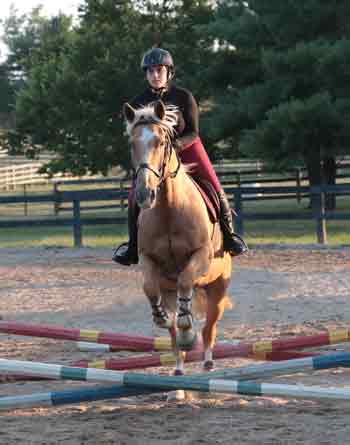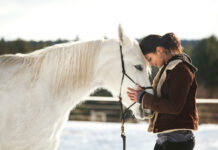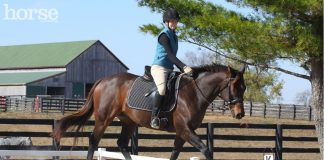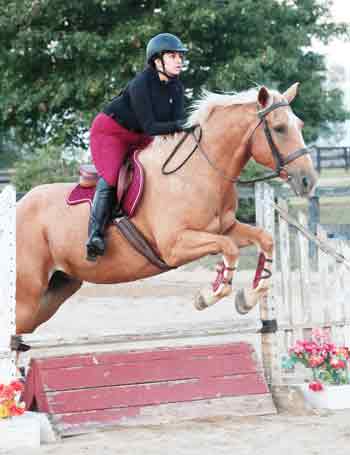
Have you been accused of ducking over jumps? If so, you’re not alone. Ducking is a common bad habit. It occurs when your upper body breaks over too far, almost as if you’re lying on the horse’s neck. Sometimes riders lean off to one side until their upper body disappears below the horse’s mane.
Finally, ducking is unattractive. It’s too much unnecessary motion, and judges consider it a fault in equitation classes.
 Do you need to ditch the ducking habit? Here are three reasons why it might have begun in the first place, plus tips on how to fix it forever.
Do you need to ditch the ducking habit? Here are three reasons why it might have begun in the first place, plus tips on how to fix it forever.
1. The Chair Seat
A chair seat looks as if you’re sitting in a chair at the dining table: Your upper body is rigidly upright with your leg bent out in front of you. Stirrups that are too long can also be a factor. In a chair seat, you’re behind the motion of a jumping horse. You’re forced to thrust your upper body toward his neck in an effort to catch up.
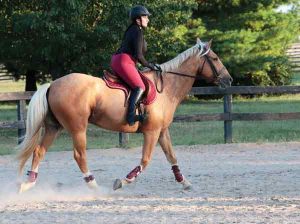
To fix the chair seat, learn to perfect the two-point position. Adjust the length of your stirrups if necessary. Then ride in two-point at all gaits until you feel in harmony with your horse’s forward motion. It’ll be impossible to hold your two-point (especially at the canter) if your upper body is inclined too far forward or too far back. Keep in mind that your two-point is very similar to the position you should have over a jump.
2. Low, Fixed Hands
If your hands are held below the withers, you may also be pressing down onto your horse’s shoulder. That does seem like a secure way to steady yourself over the jump. Unfortunately, rigid hands pull against your horse’s mouth. When he jumps, you may resort to ducking so that your horse has some amount of freedom. Instead, you should be helping your horse with your hands.
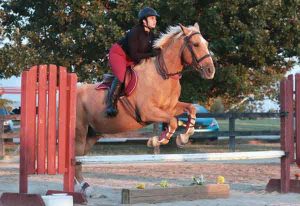
When your hands function properly, you can communicate with your pony and give him freedom to jump. Shorten your reins so your hands are held above and in front of the withers.
For a visual reminder, use an old stirrup leather as a neck strap that sits about a third of the way up his neck. Once you start jumping, press your hands forward to the strap—this will keep your hands off the withers and encourage a good two-point position.
3. A Poor Canter
Does your horse have a lazy canter? Too much pushing with your seat and bumping with your heels can put you behind the motion of your horse. Then, when your horse does reach the jump, you might throw your upper body forward in an attempt to help him leave the ground, which leads to ducking.
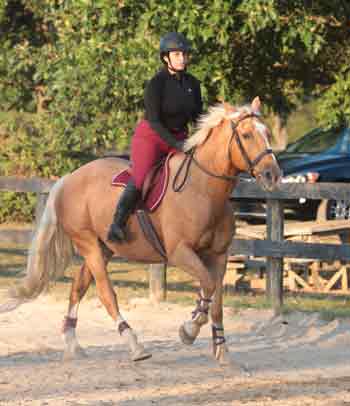
This habit could lead to an accident. If your horse refuses the jump, your sudden forward lunge could send you flying out of the saddle.
Work on developing your horse’s canter. You may need help from your trainer or instructor. Perhaps she can tell if your bit is too severe or your martingale is too short. Maybe your pony is becoming bored or sour about jumping and needs a change in his routine.
Once you discover the problem, you can fix it. Ideally, your horse should canter freely forward to each jump with controlled energy—then you won’t have to work so hard. Now you can focus on your position.
This article about how to stop ducking while jumping originally appeared in the November/December 2019 issue of Young Rider magazine. Click here to subscribe!

